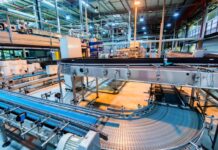
Sponsored Content by KPMG
With a rapidly evolving market, Aussie manufacturers are faced with the urgent need to adopt the latest technologies to optimise their operations and stay competitive. One critical element in this digital transformation journey is the use of advanced Enterprise Resource Planning (ERP) systems.
ERP systems have been the backbone of manufacturing operations over the last two decades, supporting everything from financial reporting to supply chain management. Over time, these systems have evolved from basic information tools into comprehensive strategic resources that provide a competitive edge.
The introduction of SAP S/4HANA is one example of a significant advancement in this evolution, positioning ERP systems to be even more integral to business success.
A new engine for transformation
SAP S/4HANA is an ERP solution designed to be a much faster version of its predecessor, SAP ECC. This next-generation software offers greater flexibility, faster processing times, and more robust data management capabilities by leveraging the latest technologies available, such as Internet of Things, blockchain, advanced analytics and artificial intelligence.
In a whitepaper, KPMG International Consulting Director, Dominique Moons explained: “The biggest difference compared to the previous software generation is that S/4HANA is much more flexible. Data is stored, managed and made accessible differently. This not only makes S/4HANA significantly faster than older ERP solutions but also gives organizations better control over the management information that exists within the organization.
One of the standout features of S/4HANA is its ability to process data in real time. In the past, generating reports was a time-consuming process, often requiring overnight data processing. With S/4HANA, reports can be generated instantly, significantly enhancing decision-making capabilities.
When to make the switch?
Support for the SAP Business Suite, which also includes SAP ECC, will halt in 2027. However, according to KPMG, the decision to migrate from SAP ECC to S/4HANA should be driven by more than just the impending 2027 support deadline for ECC.
Migrating to S/4HANA goes beyond just updating software. It is about harmonizing, standardizing, and simplifying business processes. This transition can enable manufacturers to move away from fragmented ERP landscapes with multiple software solutions and complex customisations to a more streamlined and cohesive system.
KPMG Powered Enterprise
To help manufacturers maximise the benefits of an S/4HANA migration, KPMG offers its Powered Enterprise for SAP, a result-oriented transformation solution that combines KPMG’s expertise with SAP ERP implementations and business transformations.
Powered Enterprise is designed to enable organisations to tap into predictable results, reduce risks, and maintain high implementation speed and quality.
By following a proven methodology, manufacturers can ensure that their S/4HANA migration not only updates their ERP system but also drives substantial business transformation. This approach includes comprehensive change management strategies to support users throughout the transition, ensuring that they are comfortable with the new system and processes.
Dive deeper into the transformative potential of migrating to SAP S/4HANA through KPMG’s whitepaper titled “Flexible and future-proof with S/4HANA.” Learn more at KPMG.com/au/PoweredSAP.




















